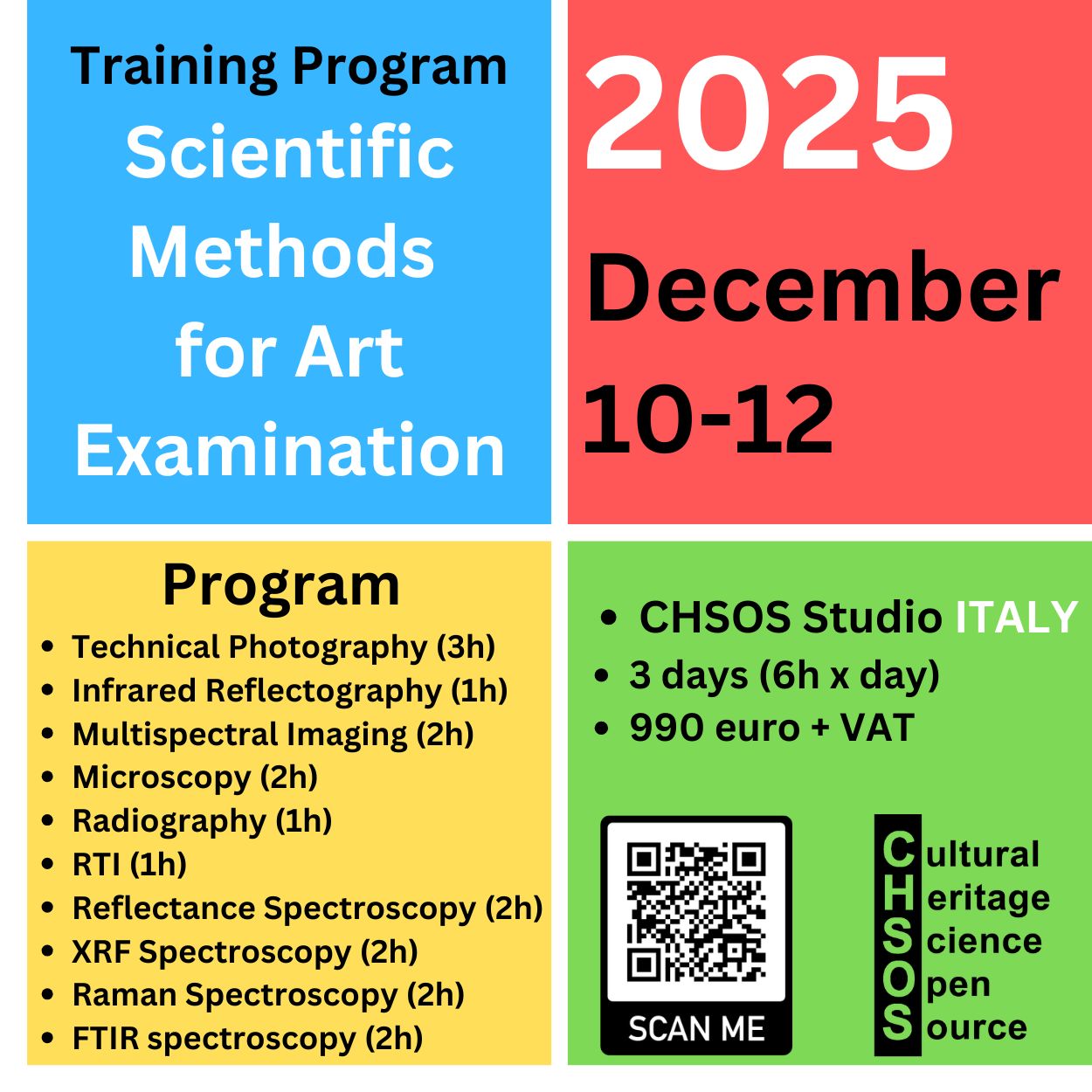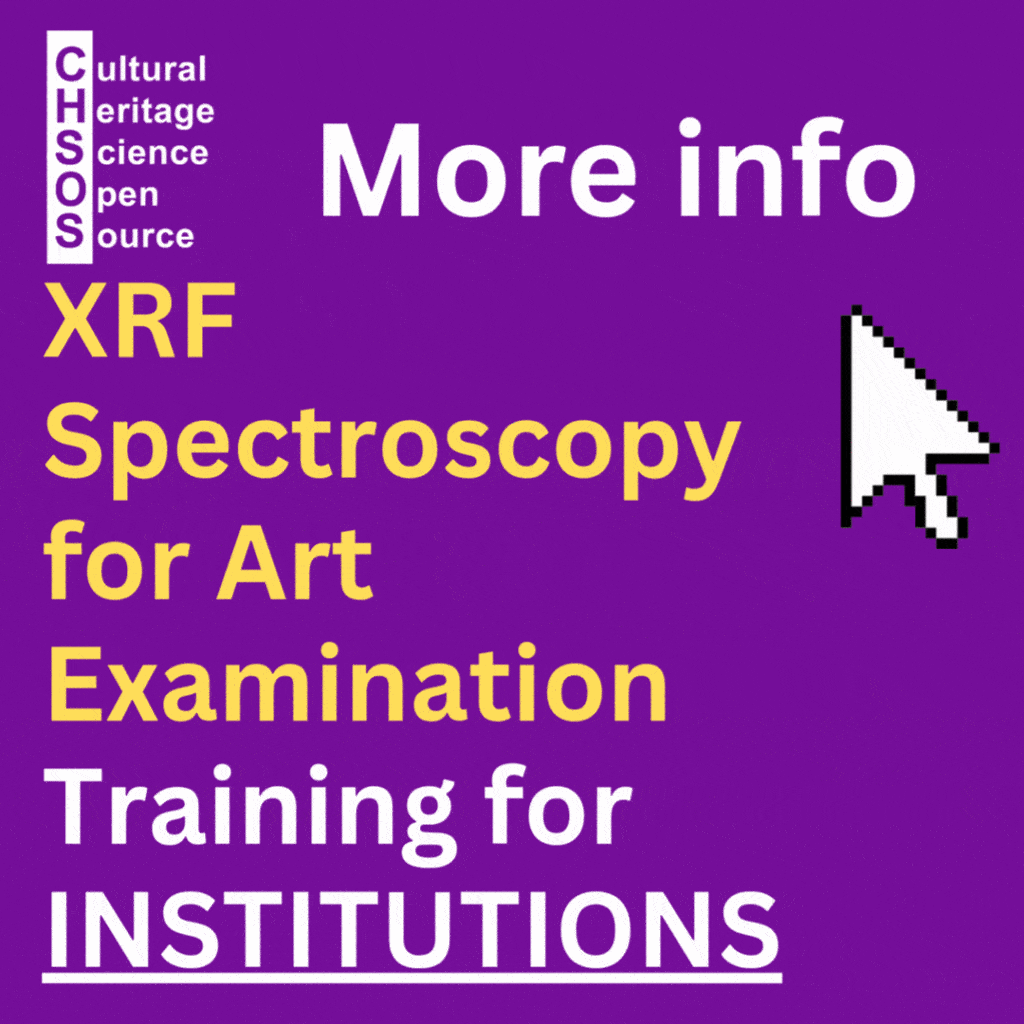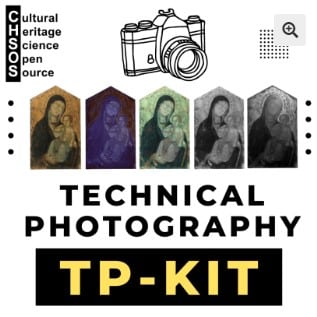Home » Test Artifacts » Technical Photography and MSI – white pigments
White Pigments
The goal of this test artifact is to assess how effectively Technical Photography (TP) and Multispectral Imaging (MSI) can differentiate between the most commonly used historical and modern white pigments: lead white, lithopone, zinc white, and titanium white.
White pigments often appear visually identical in normal light, yet they have distinct optical behaviors across the ultraviolet, visible, and infrared regions. This artifact allows us to evaluate which imaging approaches can help identify—or at least distinguish—these whites without relying on analytical spectroscopy.
The test is composed of four paint swatches, each prepared with one of the selected pigments. These whites were chosen because they represent the main categories encountered in Western art: a traditional lead-based pigment (lead white), a 19th-century commercial mixture (lithopone), and two modern industrial whites (zinc white and titanium white).
Each pigment is known to respond differently under specific imaging conditions. Zinc white is well known for its yellowish fluorescence under ultraviolet light; titanium white has distinctive behavior in UVR; lithopone, being a mixture of barium sulfate and zinc sulfide, exhibits a combination of the optical properties of its components and in particular a series of absorption bands in the near infrared.
By comparing the four swatches across UVF, UVR, VIS, and specific MSI bands, this artifact helps illustrate how imaging alone can provide clues for distinguishing among historically significant white pigments—highlighting both the possibilities and the limitations of non-invasive photographic examination.
CHSOS Test Artifacts – item #3

Technical Photography
Ultraviolet Fluorescence (UVF) photography helps distinguish zinc white thanks to its weak yellowish fluorescence. Reflected Ultraviolet (UVR) imaging is also useful, as it highlights UV-absorbent white pigments such as zinc white and titanium white.
What is truly intriguing, however, is that lithopone can be mapped using just a single filter from the ANTONELLO Multispectral Imaging filter set. Lithopone shows a characteristic group of absorbance bands in the near-infrared, and the image acquired with the 730 nm filter reveals this pigment clearly, making it possible to identify its presence with remarkable simplicity.
Multispectral Imaging
What is truly intriguing, however, is that lithopone can be mapped using just a single filter from the ANTONELLO Multispectral Imaging filter set. Lithopone shows a characteristic group of absorbance bands in the near-infrared, and the image acquired with the 730 nm filter reveals this pigment clearly, making it possible to identify its presence with remarkable simplicity.
While we could consider more advanced imaging approaches, such as multispectral imaging, the advantages of Technical Photography (TP) for this task are clear:
TP allows us to photograph and process a large number of items quickly — an essential feature when working with extensive objects such as multi-page illuminated manuscripts. The image editing required from the operator is also straightforward.
However, when using a few of just one filter of the Multispectral Imaging filters set ANTONELLO, we can go beyond standard TP without sacrificing simplicity. In this case, the advantage of Technical Photography naturally extends into multispectral imaging, because the workflow remains equally simple and straightforward: the operator simply captures images through specific filters to obtain targeted spectral information.
More complex multispectral systems typically demand highly specialized equipment and personnel with advanced training, making them less practical for routine or high-volume documentation. The ANTONELLO filter set, instead, enables a streamlined approach that brings selected multispectral capabilities within the reach of standard TP workflows.


Scientific Art Examination – Resources:
Getty Conservation Institute (GCI) – USA
The British Museum – Scientific Research Department – UK
Scientific Research Department – The Metropolitan Museum of Art, New York, USA
C2RMF (Centre de Recherche et de Restauration des Musées de France) – France
Rijksmuseum – Science Department – Netherlands








